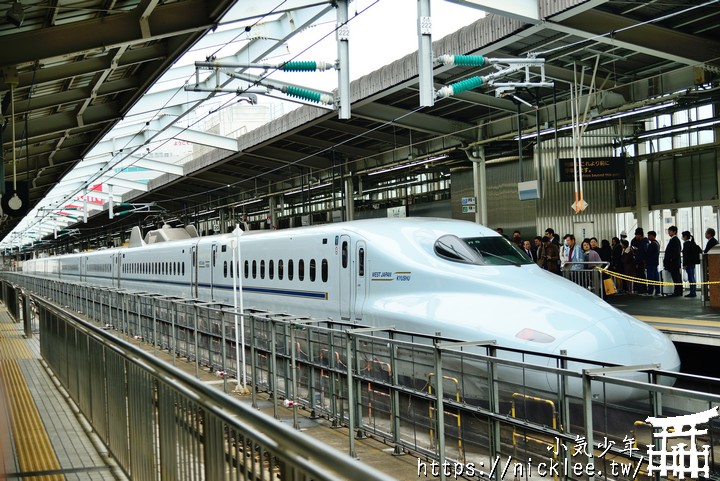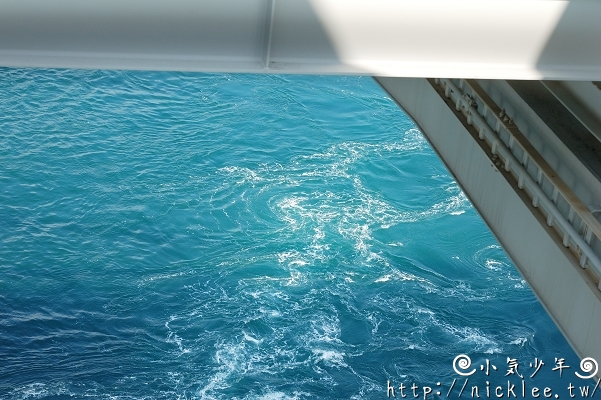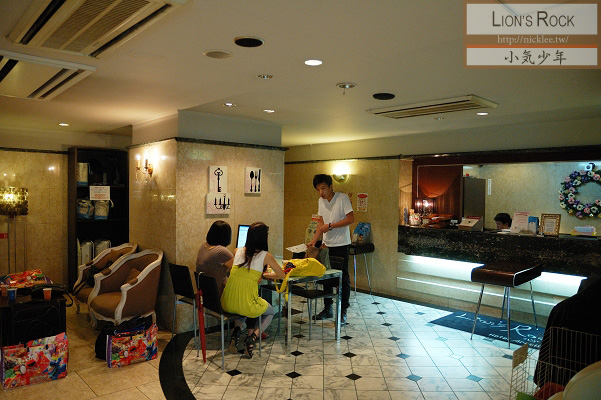When traveling in Kansai, we often choose to stay in Osaka or Kyoto to minimize the hassle of changing hotels. Then, we select suitable transportation to move to tourist attractions. However, because Kyoto and Osaka are both large cities in Japan, public transportation is abundant and complex. If we understand the transportation options and routes between Osaka and Kyoto, it can help us save time and avoid spending too much time on transportation.

Common means of public transportation
There are several transportation options for traveling between Osaka and Kyoto. Here are the main ones you can use:
1. JR West Japan
2. Hankyu Railway
3. Keihan Electric Railway
4. Kintetsu Railway
5. Shinkansen.
These modes of transportation are all very convenient to use. There isn’t one that is necessarily better or worse, it completely depends on how you utilize it. However, the fare for the Shinkansen is really expensive, and it is the Tokaido Shinkansen, so most of the transportation tickets issued by JR West Japan cannot be used, therefore I do not recommend it.
1. JR West Japan

(JR Kyoto Line New Rapid Train)
【Popular Routes】
JR Kyoto Line (or Tokaido Main Line)
【Common Route Stations】
1. JR Osaka Station (Umeda area) <-> JR Kyoto Station (Kyoto Station area)
2. JR Shin-Osaka Station <-> JR Kyoto Station
Note!! These three stations are not the starting or ending stations for the trains.
【Recent Osaka Subway Stations】
Midosuji Line – Umeda Station, Tanimachi Line – Higashi-Umeda Station, Yotsubashi Line – Nishi-Umeda Station
【Train Types】
The main trains on the JR Kyoto Line are the local trains: New Rapid, Rapid, and Local trains. In addition, there are also express trains: Express Haruka, Express Thunderbird, and Express Super Hakuto.
【Fare】
The fares for the aforementioned trains are all ¥580. However, if you want to take the express train, you will need to purchase an additional express ticket (¥760 for the express free seating ticket from JR Osaka Station to JR Kyoto Station, ¥1290 for the express reserved seating ticket). Therefore, before boarding the train, please check the platform information to avoid getting on the wrong train. If you see ticket inspectors after boarding, it means you have taken the wrong train. They will ask you to purchase a ticket, so please obediently pay the fare. Therefore, it is recommended to take the regular train on the JR Kyoto Line, and it is not recommended to take the express train, let alone the Shinkansen, as the Shinkansen does not go to JR Osaka Station.
【Time】
In terms of time, the new high-speed train from Osaka to Kyoto only takes about 30 minutes, while the express train takes about 45 minutes, and the local train takes about 1 hour.
2. Hankyu Railway

(This is a special express train on the Kobe Line)
【Popular Routes】
Hankyu Kyoto Line (or Hankyu Railway Kyoto Main Line), Hankyu Senri Line
【Common Route Stations】
Kyoto Line: Hankyu Umeda Station (Umeda area) <-> Kyoto: Hankyu Kawaramachi Station (Shijo Kawaramachi area) Senri Line: Kita-Senri <-> Tenjinbashi-suji Rokuchome
Note: The section commonly used for the Qianli Line is from Tenjinbashi Rokuchome to Awaji.
【Recent Osaka Subway Stations】
Midosuji Line – Umeda Station, Tanimachi Line – Higashi-Umeda Station, Yotsubashi Line – Nishi-Umeda Station Tenjinbashi-suji Rokuchome (This station is a shared station between Hankyu and Osaka Subway)
【Train Types】
Rapid Express, Express, Commuter Express, Rapid Limited Express, Rapid, Semi-Express, Local
【Fare】
No matter what type of train, get on at Umeda and get off at Kyoto Kawaramachi, all for ¥410.
When taking the Hankyu Railway Limited Express train, there is no need to pay an additional limited express fee.
【Time】
Express train takes about 43 minutes.
[Supplementary Explanation]
Hankyu Railway – Senri Line and Osaka Subway – Sakaisuji Line operate directly at “Tenjimbashisuji Rokuchome” (referred to as “Tenroku”).
Therefore, you can take any station on the Osaka Subway – Sakaisuji Line (e.g. Tenjinchaya, Nipponbashi) to Awaza Station, and then transfer to the Hankyu Kyoto Line within the station. From there, you can directly reach areas such as Arashiyama, Karasuma, and Kyoto Kawaramachi. Some trains even go directly to Kyoto Kawaramachi! For more details, please refer to the article on direct operation.
3. Keihan Electric Railway

(This is a semi-express train on the Keihan Main Line)
【Popular Routes】
Keihan Main Line
【Common Route Stations】
Osaka: Yodoyabashi Station (or Nakanoshima Station) <-> Kyoto: Demachiyanagi Station
【Recent Osaka Subway Stations】
Midosuji Line – Yodoyabashi Station, Sakaisuji Line – Kitahama Station
【Train Types】Express, Rapid Express, Limited Express, Late Night Express, Semi-Express, Commuter Semi-Express, Local Rapid, Local
【Fare】
No matter what type of train, boarding at Dotonbori and getting off at Gion Shijo, the fare is ¥430.
When riding the regular car of the Keihan Electric Railway Limited Express train, there is no need to pay an additional limited express fee. However, if you choose to ride the Premium Car, you will need to purchase a separate Premium Car ticket.
For more details, please refer to: Keihan Electric Railway – Limited Express Train Reserved Seats – Premium Car.
【Time】
Dotonbori → Gion Shijo, the express train takes 50 minutes.
4. Kintetsu Railway

(This is a Kintetsu train)
【Popular Routes】
Namba Line – Osaka Line – Nara Line – Kyoto Line
【Common Route Stations】
Osaka: Namba Station <-> Kyoto: Kyoto Station
【Recent Osaka Subway Stations】
Namba Station: Midosuji Line, Sen-Nichimae Line, Yotsubashi Line (Kintetsu Station: Osaka-Namba Station)
Nipponbashi Station: Sen-Nichimae Line, Sakaisuji Line (Kintetsu Station: Nipponbashi Station)
Tanimachi Kyuchome Station: Tanimachi Line, Sen-Nichimae Line (Kintetsu Station: Osaka-Uehommachi Station)
Tsuruhashi Station: Sen-Nichimae Line (Kintetsu Station: Tsuruhashi Station)
【Train Types】
Express, Rapid Express, Express. Late-night Express, Semi-Express. Commuter Semi-Express, Local Express, Local.
【Fare】
The limited express trains of Kintetsu Railway are all reserved seating, so you need to purchase a special express reserved seat ticket to ride. Other regular train types do not require a purchase.
From Osaka Namba to Kyoto Station, the regular fare is ¥960.
Special express fares: Kyoto to Osaka Namba ¥790, Kyoto to Yamato Nishinokyo ¥520, Yamato Nishinokyo to Osaka Namba ¥520.
【Time】
Osaka Namba → Kyoto, non-express trains take 70-85 minutes.
5. Tokaido Shinkansen

【Popular Routes】
Tokaido Shinkansen
【Origin and Destination】
Osaka: Shinkansen – Shin-Osaka Station <-> Kyoto: Shinkansen – Kyoto Station
Attention! Kyoto Station is not the starting or ending station for the train.
【Recent Osaka Subway Stations】
Midosuji Line – Shin-Osaka Station
【Train Types】
The main ones are Nozomi, Hikari, and Kodama.
【Fare】
The basic fare for the above-mentioned Shinkansen trains is ¥580. However, in order to ride the Shinkansen, you will need to purchase an additional Shinkansen express ticket. The cost of the express ticket from Shinkansen-Shin Osaka Station to Shinkansen-Kyoto Station is ¥870, and the cost of a reserved seat on the express train is ¥2500. Therefore, before entering the station, please make sure to check the name of the ticket gate to avoid entering the wrong station.
【Time】
In terms of time, the Shinkansen train only takes about 14 minutes to travel from Shin-Osaka to Kyoto.
[Supplementary Explanation]
The Shinkansen station is adjacent to the JR station but separate, so the ticket gates (fare gates) are also different. Therefore, please do not go to the wrong station and wonder why they won’t let you enter.
Route Options for Traveling between Osaka and Kyoto
The following is an explanation of how to travel from Kyoto to Osaka. If you are traveling from Osaka to Kyoto, simply reverse the route. Before looking at the various routes, please be sure to check the following route map.

◆ Gion, Shijo Kawaramachi Area → Umeda Area
1. Hankyu Railway – Kyoto Kawaramachi. Take the Kyoto Line to Umeda Station. Number of transfers: 0.
◆ Gion, Shijo Kawaramachi Area → Namba Area or Midosuji Line Route
Popular stations along the Midosuji Line include Shinsaibashi, Daikokucho, and Hommachi.
1. Take the Hankyu Railway-Kyoto Kawaramachi (or Karasuma) Line to Umeda Station. After exiting the station, walk to Osaka Subway-Midosuji Line-Umeda Station (M16). Then, take the Midosuji Line to Namba (M20).
Number of transfers: 1.
2. Take the Hankyu Railway-Kyoto Kawaramachi (or Karasuma) line and get off at Umeda station. Walk to the Nishi-Umeda station (Y11) on the Yotsubashi line and take the Yotsubashi line to Namba (Y15). Get off and walk to JR Namba station.
Number of transfers: 1.
3. Take the Keihan train from Gion-Shijo. After arriving at Yodoyabashi Station, exit the station and walk to the Osaka Subway Midosuji Line Yodoyabashi Station (M17). Transfer to Namba (M20).
Number of transfers: 1.
◆ Gion, Shijo Kawaramachi Area → Nihonbashi or Sakaisuji Line
Popular stations along the Sakaisuji Line, such as Nagahoribashi and Dobutsuen-mae.
1. Take the Hankyu Railway-Kyoto Line from Kawaramachi Station and transfer to the Senri Line after Awaji. It will take you directly to Nihonbashi Station (K17) on the Osaka Subway-Sakaisuji Line.
Number of transfers: 1
(No need to transfer at “Tenjinbashi Rokuchome” station, please refer to the article on “direct transfer” for the reason.)
2. Keihan Electric Railway – Gion Shijo. Take the Keihan Main Line and get off at Kitahama. Transfer to the Osaka Subway – Sakaisuji Line and go to Nipponbashi Station (K17).
Number of transfers: 1.
◆ Gion, Shijo Kawaramachi Area → Tennoji Area
1. Take the Hankyu Railway-Kyoto Kawaramachi and ride the Kyoto Line to Umeda Station. After exiting the station, walk to Osaka Subway-Midosuji Line-Umeda Station (M16), then take the Midosuji Line to Tennoji (M23).
Number of transfers: 1.
2. Take the Hankyu Railway-Kyoto Kawaramachi and ride the Kyoto Line to Umeda Station. After exiting the station, walk to Osaka Subway-Tanimachi Line-Higashi-Umeda Station (T20), then take the Tanimachi Line to Tennoji (T27).
Number of transfers: 1.
3. Keihan Electric Railway – Gion Shijo. Take the Keihan Main Line to Kyobashi Station, then exit the station and walk to JR Osaka Loop Line – Kyobashi Station. Transfer to the Osaka Loop Line (outer loop) and change trains at Tennoji.
Number of transfers: 1.
4. Take the Keihan train from Gion-Shijo to Tenmangu Station. After exiting the station, walk to the Osaka Subway-Tanimachi Line-Tenmabashi Station (T22), then take the Tanimachi Line to Tennoji (T27).
Number of transfers: 1.

◆ Kyoto Station → Umeda Area
1. Take the JR Kyoto Line to JR Osaka Station.
Number of transfers: 0.
2. Take the Tokaido Shinkansen to Shin-Osaka Station, exit the station, and walk to JR Shin-Osaka Station. Take the JR Kyoto Line to JR Osaka Station.
Number of transfers: 1
(If you want to experience the Shinkansen, choose this option. If you want to save money, it is not recommended).
3. Take the Kyoto City Subway to Shijo Station, exit the station, and transfer to the Hankyu Kyoto Line to Hankyu Umeda Station.
Number of transfers: 1.
◆ Kyoto Station → Namba area, along the Midosuji Line
1. Take the JR Kyoto Line to JR Osaka Station, exit the station, and walk to Osaka Metro – Midosuji Line – Umeda Station (M16). Then, take the Midosuji Line to Namba (M20).
Number of transfers: 1.
2. Take the JR Kyoto Line to JR Shin-Osaka Station, exit the station, and walk to the Osaka Metro Midosuji Line Shin-Osaka Station (M13). Then, take the Midosuji Line to Namba (M20).
Number of transfers: 1.
3. Take the Kintetsu Kyoto Line to Yamato-Saidaiji, then transfer to the Nara Line to Osaka Namba.
(Also applicable to Nipponbashi, Tanimachi Kyuchome, Tsuruhashi, etc.)
Number of transfers: 1.
4. Take the Kintetsu Sightseeing Limited Express – Aodangi, which will directly take you to Osaka Namba Station.
Number of transfers: 0.
Although it is more expensive, it is more relaxing and suitable for people who get motion sickness on buses and do not want to change vehicles too often. You can refer to the latest tourist express train of Kintetsu – Aoniyoshi (あをによし-AONIYOSHI).
◆ Kyoto Station → JR Namba Area
1. Take the Haruka express train towards Kansai Airport and get off at Tennoji Station. Transfer to the Yamato Line and head to JR Namba. (Please note that an additional fee is required for the Haruka express train).
Number of transfers: 1.
2. Take the JR Kyoto Line to JR Osaka Station, then transfer to the Osaka Loop Line (either inner or outer loop) to Tennoji Station. From there, transfer again to the Yamato Line to JR Namba.
Number of transfers: 2.
◆ Kyoto Station → Nihonbashi area, Sakaisuji Line along, Osaka Uehommachi
1. Take the Kintetsu Kyoto Line to Yamato Saidaiji, then transfer to the Nara Line to Kintetsu-Nipponbashi or Osaka Uehommachi. (Only applicable to Nipponbashi or Kintetsu Osaka Uehommachi)
Number of transfers: 1.
2. Take the JR Kyoto Line to JR Osaka Station (or Shin-Osaka Station), exit the station, and walk to the Osaka Metro Midosuji Line station (Umeda Station or Shin-Osaka Station). Then, take the Midosuji Line to Namba (M20), transfer to the Sen-Nichimae Line, and get off at Nipponbashi (K17).
Number of transfers: 2.
3. Take the JR Kyoto Line to JR Osaka Station, exit the station, and walk to Osaka Subway – Tanimachi Line – Higashi-Umeda Station (T20). Then, take the Tanimachi Line to Tanimachi Kyuchome Station (T25), exit the station, and you will be near Kintetsu Osaka-Uehommachi.
Number of transfers: 1.
4. Take the Kintetsu Sightseeing Limited Express – Aodangi, which will directly take you to Osaka Uehommachi Station.
Number of transfers: 0.
Although it is more expensive, it is more relaxing and suitable for people who get motion sickness on buses and do not want to change vehicles too often. You can refer to the latest tourist express train of Kintetsu – Aoniyoshi (あをによし-AONIYOSHI).
◆ Kyoto Station → Tennoji Area
1. Take the Haruka express train towards Kansai Airport. The train will pass through Tennoji Station without any transfers required. (However, please note that this option is more expensive as you will need to purchase a limited express ticket).
Number of transfers: 0.
2. Take the JR Kyoto Line to JR Osaka Station, then transfer to the Osaka Loop Line (either inner or outer loop) to Tennoji Station.
Number of transfers: 1.
3. Take the JR Kyoto Line to JR Osaka Station (or Shin-Osaka Station), exit the station, and walk to the Osaka Metro Midosuji Line (Umeda Station or Shin-Osaka Station). Then, take the Midosuji Line to Tennoji (M23).
Number of transfers: 1.
4. Take the JR Nara Line to JR Nara Station, then transfer to the Yamato Line within the station. You can directly transfer to Tennoji.
Number of transfers: 1.
It is not recommended to use the Kintetsu train as it takes a longer route, consumes more time, and wastes money.
◆ Along the Keihan Railway Line → Osaka Umeda, Namba, Nihonbashi, Tennoji
The areas along the Keihan Electric Railway line refer to Sanjo, Gion Shijo, Kiyomizu Gojo, Fushimi Inari, and so on.
1. Take the Keihan Main Line to Yodoyabashi Station. Upon exiting the station, walk to the Osaka Metro Midosuji Line Yodoyabashi Station (M17) and transfer to Umeda Station (M16).
Number of transfers: 1.
2. Take the Keihan Main Line to Yodoyabashi Station, then walk to the Yodoyabashi Station (M17) of the Osaka Subway Midosuji Line. Transfer to Namba (M20).
Number of transfers: 1.
3. Take the Keihan Main Line to Kitahama Station, then walk to Osaka Metro – Sakaisuji Line – Kitahama Station (K14) and transfer to Nagahoribashi (K16) or Nipponbashi (K17).
Number of transfers: 1.
4. Take the Keihan Main Line to Temmabashi Station, then walk to the Osaka Subway – Tanimachi Line – Temmabashi Station (T22) and transfer to Tennoji Station (T27).
Number of transfers: 1.
◆ Hankyu Railway Line Area → Osaka Umeda, Namba, Nihonbashi, Tennoji
The area along the Hankyu Railway line refers to stations such as Shijo Omiya, Shijo, Kyoto Kawaramachi, and so on.
1. Take the Hankyu Kyoto Line to Umeda Station.
Number of transfers: 0.
2. Take the Hankyu Kyoto Line to Umeda Station. Upon exiting the station, walk to Osaka Metro – Midosuji Line – Umeda Station (M16) and transfer to Namba (M20) or Tennoji (M23).
Number of transfers: 1.
3. Take the Hankyu Kyoto Line to Awaji Station, then transfer to the Senri Line for direct access to the Osaka Subway Sakaisuji Line. Get off at Nagahoribashi (K16) or Nipponbashi (K17).
Number of transfers: 1.
4. Take the Hankyu Kyoto Line to Umeda Station, then walk to Osaka Metro – Tanimachi Line – Higashi-Umeda Station (T20) and transfer to the Tanimachi Line to Tennoji (T27).
Conclusion
Above is a simple explanation of the transportation routes between Osaka and Kyoto. Due to the amount of content, I have only listed the more recommended routes and methods.
In addition, I have also written about these modes of transportation. Please refer to the following:
How to take the JR from Osaka to Kyoto
Another option from Osaka to Kyoto – Keihan Electric Railway
Another option from Kyoto to Osaka – Hankyu Railway
For more information on transportation in the Kansai region, please refer to: Kansai Transportation Guide
『Original Source:https://nicklee.tw/1018/』





